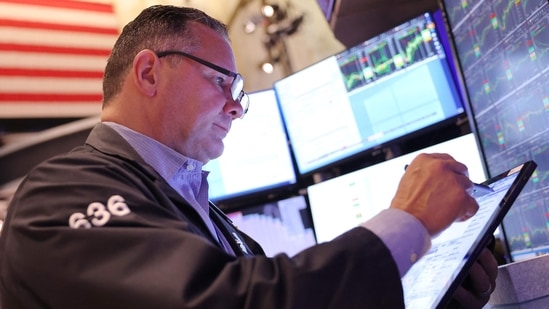US stocks experienced a robust rally on Thursday, as the Dow Jones Industrial Average logged its best day in three weeks, driven by encouraging labour market data that restored investor confidence following a sharp sell-off earlier in the week.

Wall Street roars back from Monday rout
The S&P 500 surged by 2.3%, closing at 5,319.31, marking its most daily gain since November 2022. The Dow Jones Industrial Average also saw a substantial increase, climbing 683.04 points, or 1.76%, to end the day at 39,446.49. Meanwhile, the Nasdaq Composite led the charge with a 2.87% rise, finishing at 16,660.02.
One of the key drivers of Thursday’s rally was the latest weekly jobless claims report, which provided a boost to market sentiment. The Labor Department reported that initial filings for unemployment benefits fell to 233,000 last week, down 17,000 from the previous week. This figure came in below the Dow Jones estimate of 240,000, alleviating some concerns about the labor market’s strength.
ALSO READ| US stock market: Airbnb shares plunge a record 15% after weak sales
US stocks rally as labour market news and weaker Yen lift investor sentiment
The 10-year Treasury yield reached 4% following the jobless claims report, a level that had not been seen since before the July jobs data shook the markets. This uptick in yields reflects renewed confidence in the U.S. economy’s ability to withstand pressures as investors reassessed the likelihood of a recession in light of the new data.
In addition to the positive labour market news, a weaker Japanese yen against the US dollar played a role in Thursday’s rally. Earlier in the week, a surge in the yen had triggered the unwinding of a popular carry trade among hedge funds, which was cited as a significant factor in Monday’s stock market drop. The reversal of this trend on Thursday provided additional support to U.S. equities.
Pharmaceutical giant Eli Lilly was among the standout performers, with its shares soaring 9.5% after the company reported better-than-expected earnings and raised its full-year outlook. The strong demand for its diabetes treatment Mounjaro and obesity drug Zepbound was a key factor in the company’s upbeat performance.
Nvidia, Broadcom, and Meta lead the charge
Other momentum stocks that had suffered earlier in the week also rebounded sharply. Chipmakers Nvidia and Broadcom both jumped by more than 6%, while Meta Platforms climbed 4.2% and Apple rose by about 1.7%.
“This is the bounce people were waiting for,” said Liz Young, head of investment strategy at SoFi, during an interview with CNBC’s ‘Closing Bell.’
“So now what we’ve learned is we’re not going to bounce just for bouncing’s sake. We need good news in order to move forward and in order to prove that the rally is durable.”
ALSO READ| How Warren Buffett cut losses with record cash reserve before stock market crash
Despite the day’s gains, the major indices remained lower for the week, with the S&P 500 down 0.5%, and the Dow and Nasdaq each off by around 0.7%. However, much of the losses from Monday’s rout have been recovered.
Frank Benzimra, head of Asia equity strategy and multi-asset strategist at Societe Generale noted that “the largest moves of the last week happened in Japan and Technology, suggesting that Tech valuation and carry-trade reversals are a more convincing explanation for the volatility than the rising probability of a U.S. recession.”





